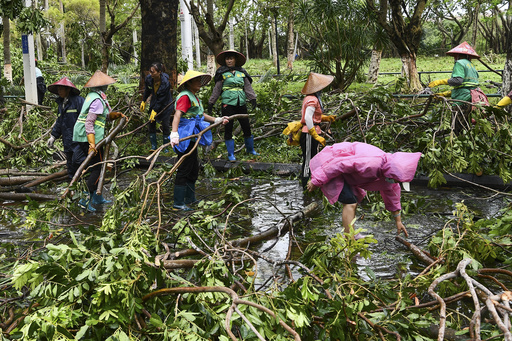Typhoon Yagi hit northern Vietnam on Saturday, prompting authorities to close airports and evacuate vulnerable areas. Vietnamese meteorological authorities labeled Yagi as one of the strongest typhoons in the region in the last decade. The typhoon caused two deaths and nearly a hundred injuries in Hainan, China, before reaching Vietnam.
Yagi made landfall in Quang Ninh and Haiphong provinces of Vietnam with wind speeds reaching up to 149 kilometers per hour. The storm caused power outages in Quang Ninh and Thai Binh provinces, and led to the cancellation of hundreds of cruises at Ha Long Bay. Local media reported damage to property and infrastructure, with reports of boats being swept out to sea.
Ahead of the typhoon’s arrival, the Vietnamese government issued alerts and evacuated those at risk of floods and landslides. Trees in Hanoi were pruned to minimize the risk of falling, but strong winds and heavy rain caused tree and billboard damage in northern cities. In China, Yagi hit Wenchang in Hainan province, resulting in casualties and necessitating the relocation of hundreds of thousands of residents.
The typhoon impacted multiple regions, including Hong Kong, where over 270 people sought refuge at government shelters, flights were canceled, trees were downed, and various services were halted. Yagi had previously affected the Philippines, causing fatalities, displacing tens of thousands, and disrupting daily activities.
Attributed to the warming oceans due to climate change, intense typhoons are becoming more frequent, particularly in Southeast Asia. The United Nations’ climate change report warns about the increasing occurrence of severe storms due to rising sea temperatures.
